If you tend to take yourself too seriously, here’s a boat that can fix that. Paul Elkins’s Little Miss Sally is an electric micro-boat for which whimsy is as essential to its operation as its 12-volt battery. I first saw the boat on a YouTube video. In it, Paul slides her out of the back of his pick-up truck. A man with a horseshoe moustache, sunglasses, and a camo cowboy hat says: “That’s baaad. You gonna ride that thing? Sweeet!” The video has over a million views. That was my first hint that the boat might have a broad appeal.
Paul has invented and designed lots of things: several boats, bicycle camper trailers, micro shelters, and odd things such as paint-can stilts. He describes himself as a “conceptual artist”; he’s more interested in exploring ideas and creating things than capitalizing on them. Most of Paul’s creations get little more than a photo on his website or a video on YouTube, and then he’s off to the next idea. Little Miss Sally is one of 10 creations for which he has drawn plans.
The boat is roughly 8′ long, 30″ wide, and 14″ deep. While the 42-page instruction manual gives detailed dimensions for all of the pieces, the exact overall dimensions aren’t listed. They’re not really necessary, and the focus of much of Paul’s work is just on getting things done. His full list of materials and tools, measured drawings, and step-by-step instructions and photographs will make it easy for a novice to put the boat together. If you have even a modest background in woodworking, you might be able to get the boat assembled in a weekend and be ready for wiring and paint or varnish.
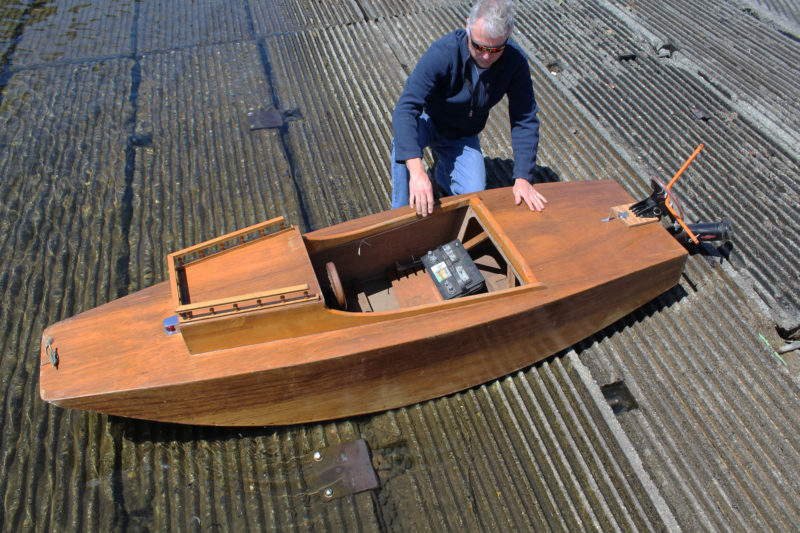 photographs and video by the author
photographs and video by the authorAt the launch ramp, Elkins sets the 12-volt deep-cycle battery behind the angled panel that serves as a backrest. The trolling motor’s shaft has been shortened and its controls moved to the dash panel forward of the wheel.
Little Miss Sally has a scow-like hull of 1/4″ mahogany marine plywood. The vertical side panels are sprung around the transom, the bulkheads that define the cockpit, and a horizontal wedge-shaped bow piece. Intermediate framing reinforces the sides and decks. The bottom panel is wrapped in a continuous sweeping curve from the bottom of the transom to the forward end of the sheerline. The one-piece plywood deck, the bottom, and the sides are all nailed to 3/4″-square longitudinals.
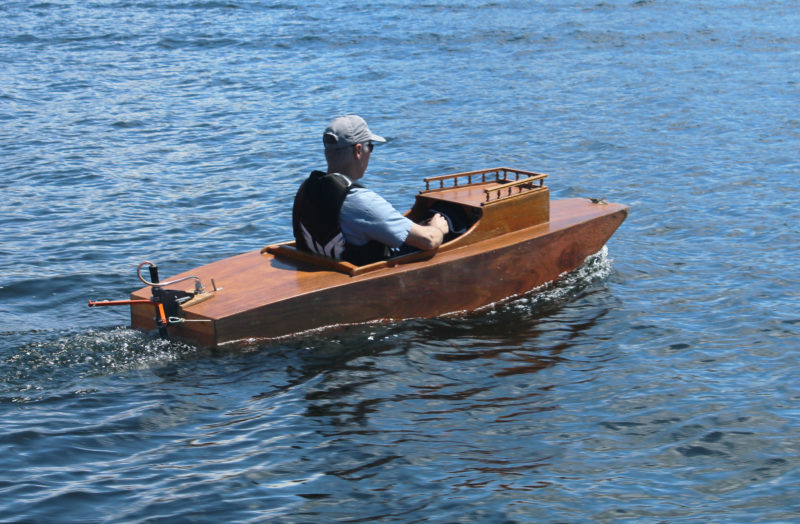
The hull’s deep rocker and the weight of the 12-v battery give the boat good stability.
The plans include an optional profile in which the bottom runs straight aft from the lowest point of the hull to a deeper transom. Paul’s suggestion is that the alternate hull “might go a little faster and carry a little more weight.” A few of the Little Miss Sally builders who have pictures of their boats on Paul’s site appear to have chosen this deeper stern, but without any additional weight aft, the extra displacement merely lifts the stern, pitching the bow down. The boat may still perform satisfactorily, but it looks out of trim and the otherwise jaunty sheerline suffers. It’s an 8′ boat. It’s not going to go fast or carry a lot of cargo, so you’ll be better off sticking with the original design.
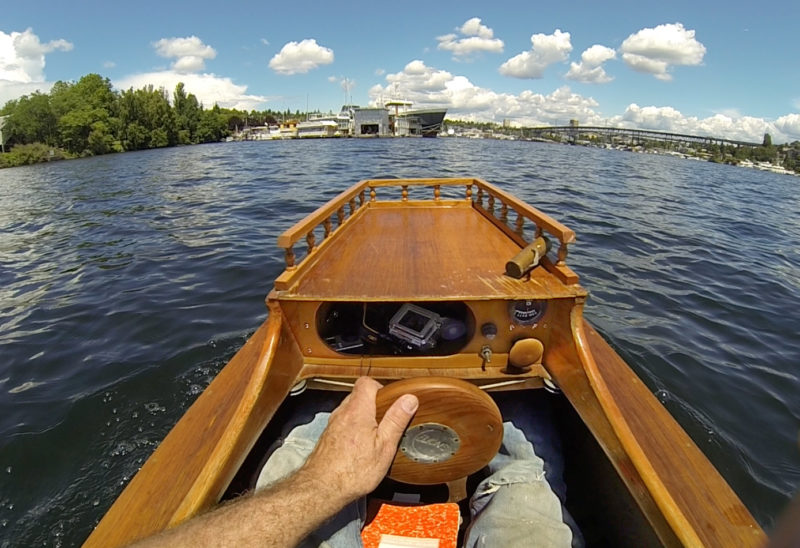
The cockpit was a comfortable fit for the reviewer’s 6′ frame and his size-13 shoes.
The pine cockpit coaming sweeps up to form the superstructure; its roof is surrounded by a fiddle rail to keep lunch and sunglasses from slipping overboard. The instrument panel has an amp-meter, a switch for running lights, a horn, and a dial control for the electric motor. The adjacent compartment has room for day-trip sundries. The wooden wheel turns on a length of steel tubing with the steering lines wrapped around it.
Little Miss Sally’s outboard motor is a modified 32-lb-thrust trolling motor. The shaft is shortened and the controls, with a bit of extra wire, are moved to the instrument panel. A steering bar, its ends angled back about 45 degrees, is secured to the motor shaft with stainless-steel hose clamps. A deep-cycle 12-volt battery occupies the space under the aft deck, just behind the cockpit.
While the plans call only for a block of foam for flotation in the bow, the stern compartment should also be fitted with foam, leaving only space for the battery, to support the stern in the event of a swamping.
The exterior gets a layer of fiberglass and epoxy before the skids that protect the bottom are fastened in place and the finish is applied.
The weight of the boat without the battery and motor aboard is about 65 lbs, so it’s not too heavy to cartop if you’re strong enough to make the lift or have a way to raise to it one end at a time. Readying the boat for launch takes just a few minutes. These are the steps to getting underway: the motor must be pinned to its mount and plugged in; the rudder lines must be clipped to the yoke; and the battery must be put in place through a hinged panel in the aft bulkhead. The plans don’t specify a line to tilt the motor up for launching and landing, but it would be easy enough to rig one.
Getting aboard Little Miss Sally is a bit like getting into a kayak, except the weight of the 12-volt battery gives the boat a lot more stability. I had no trouble climbing aboard or exiting at a high dock, a task that isn’t easy with a kayak. Once I planted myself in the cockpit, the boat felt rock-solid; the deep rocker of the bottom put my weight down low. With my 215 lbs aboard, Little Miss Sally had more than 6″ of freeboard, but the boat doesn’t have Coast Guard rating for a safe load, and should be used with caution, and only on calm, protected waters
You’ll need a two-piece kayak paddle for backup propulsion; there’s room in the cockpit for it. Slats kept me off the bottom, so the seat of my pants would have stayed dry if any water had splashed aboard. The aft bulkhead, angled at 75 degrees, makes a comfortable backrest, and in spite of the boat’s small size the accommodations didn’t feel at all cramped. With my elbows resting on the low coaming, I felt as if I were driving a convertible sports car with the windows and the top down for a sunny day.
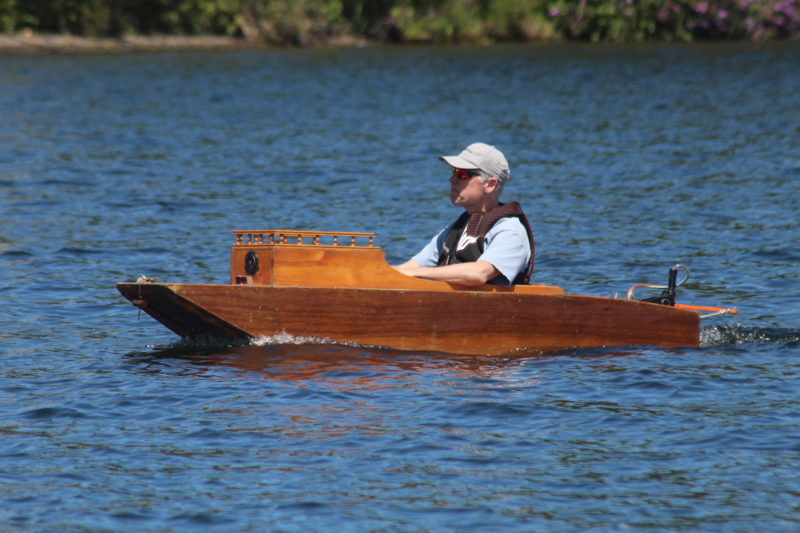
The hull is made of two sheets of 1/4″ plywood and about 25 board feet of lumber.
At full throttle I made a GPS-measured 3 knots. Paul thought he may have made a mistake when he rewired the boat for our outing, and the motor wasn’t getting up to full power. Judging by the sound of the motor, I’d be inclined to agree with him. I have a similar trolling motor, and it has more oomph and makes more of a whine when running wide open. Paul estimated the top speed somewhere between 4 and 5 knots. I was quite content with making 3 knots. Being so close to the water on all sides exaggerates the sensation of speed.
The water on the lake was scuffed only by a light breeze, so I had a pretty smooth ride. Little Miss Sally just bobbed over the boat wakes I encountered. A boat as short as this one tends to follow the contours of waves, rather than plow through them as a longer boat would, and even if a wave did spill over the bow, the superstructure would keep the water from getting to the cockpit.
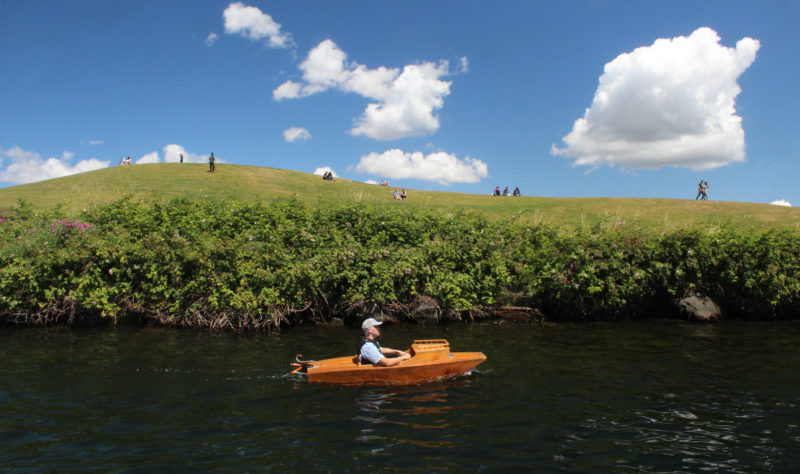
Elkins’s micro-boat provides a comfortable seat for watching the panorama of protected waterways unfold.
The little steering wheel does its job well. My hand dwarfed it, and along with the push-button electric horn it made me feel as if I were riding one of those coin-operated kiddie rides at the entrances to department stores (but without even a hint of embarrassment).
I didn’t have a chance to run the boat long enough to work through the battery’s charge, but Paul reports taking leisurely outings of 6 to 7 miles aboard Little Miss Sally and spending a whole afternoon, up to 6 hours, with frequent stops to enjoy the sights on Lake Union and other sheltered waters in Western Washington.
After I returned Little Miss Sally to the launch ramp, Paul took her back out to enjoy the rest of the afternoon. A man working with a utility crew, dressed in a Day-Glo orange vest and a hard hat, approached me at the top of the launch ramp and asked about the boat. He said he was planning on getting his first boat and needed something that wouldn’t take up a lot of room at home. He thought Little Miss Sally would be just the thing for lake fishing, and would offer an economical way for him to get out on the water without a whole lot of fuss. There’s nothing silly about that.![]()
Little Miss Sally Particulars
[table]
Length/8′
Beam/30″
Weight (without battery)/65 lbs
[/table] 
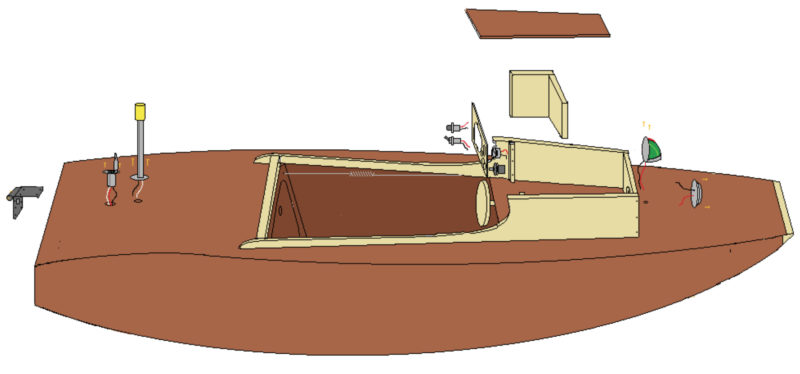
Plans for the Little Miss Sally are available from Paul Elkins. The 42-page downloadable PDF manual with dimensioned drawings costs $20.00.
Is there a boat you’d like to know more about? Have you built one that you think other Small Boats Monthly readers would enjoy? Please email us!
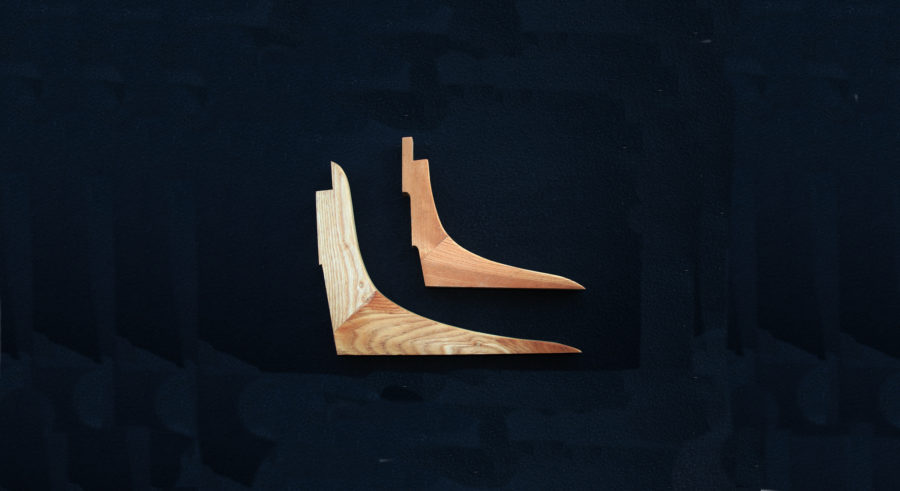
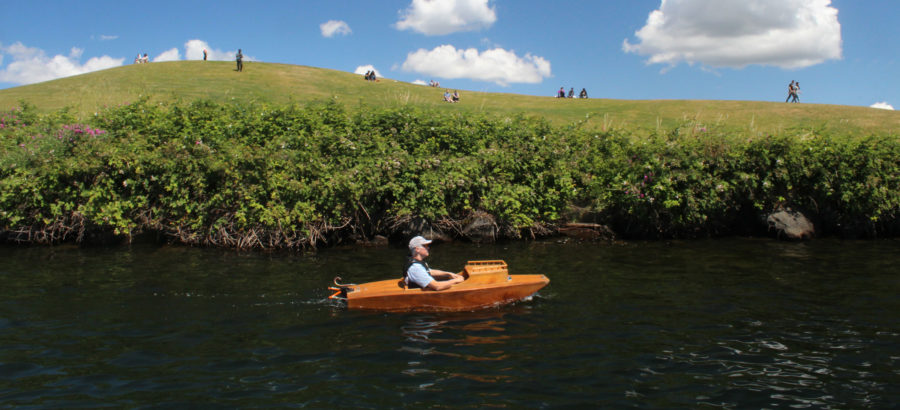
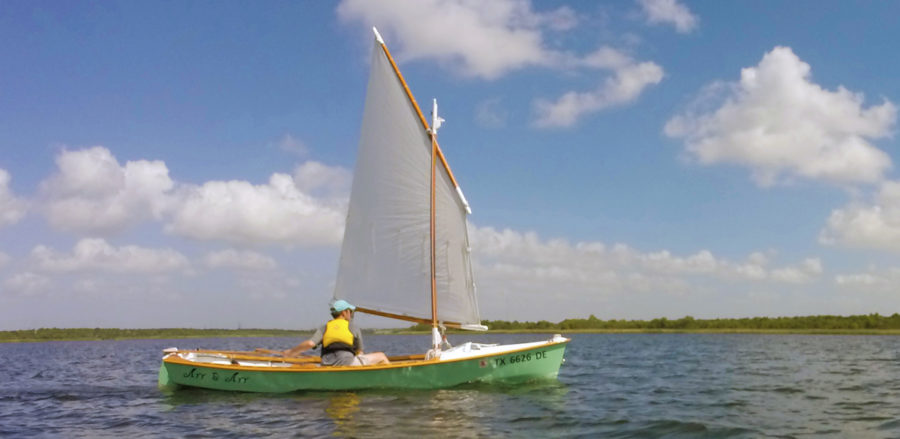
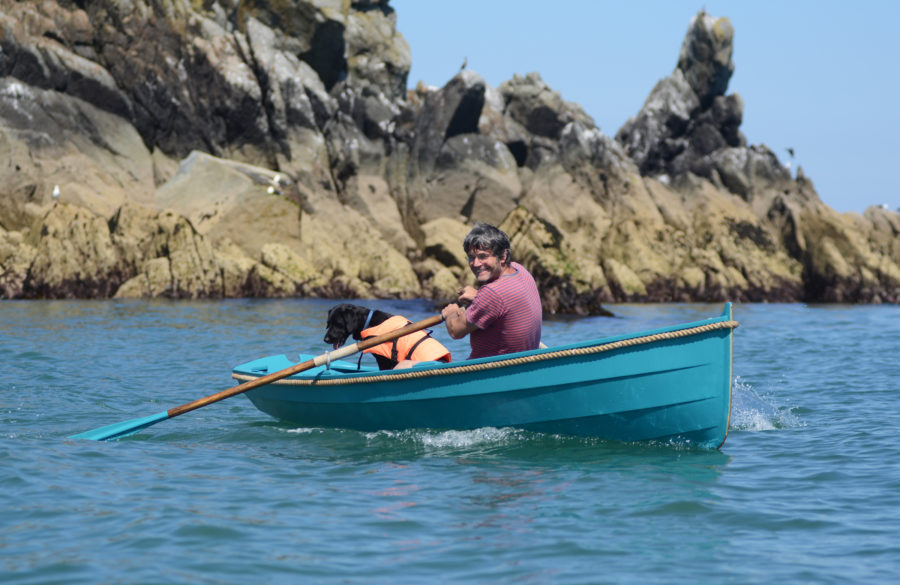
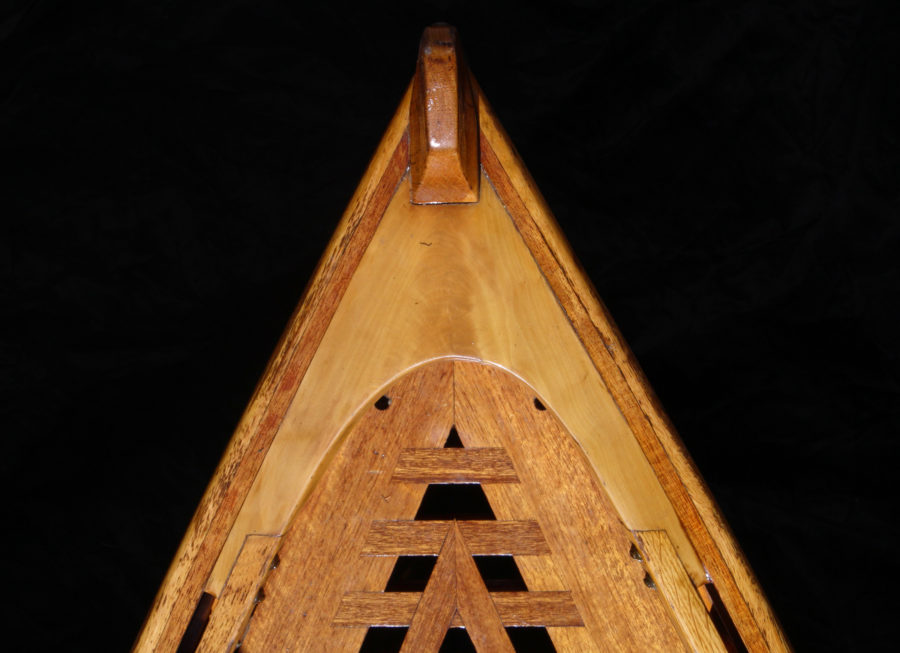
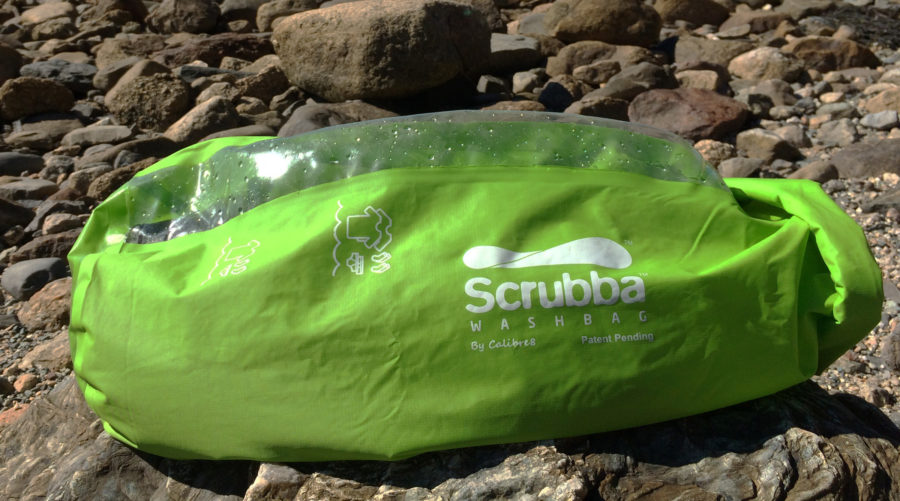
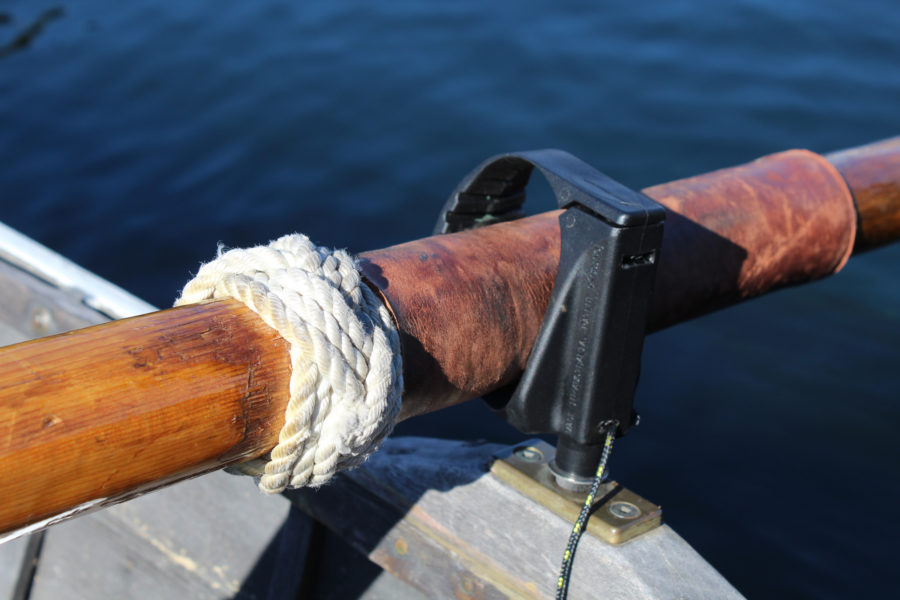
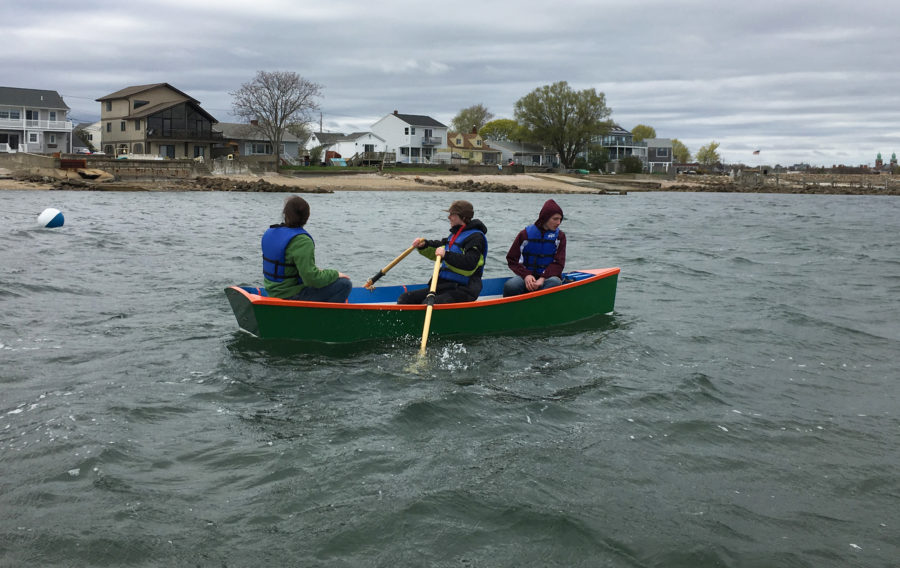


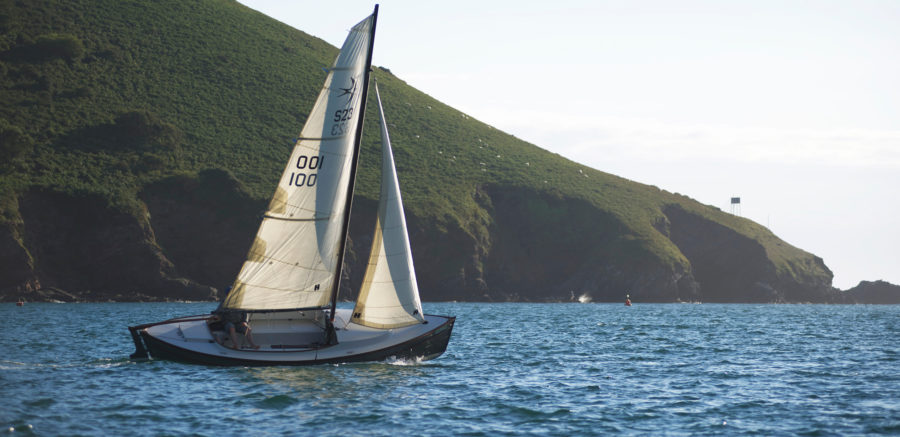
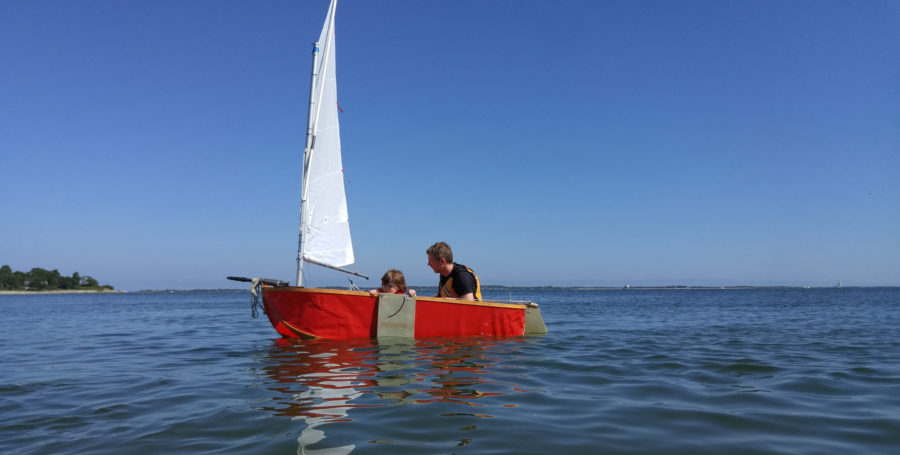
This micro boat is a hoot!